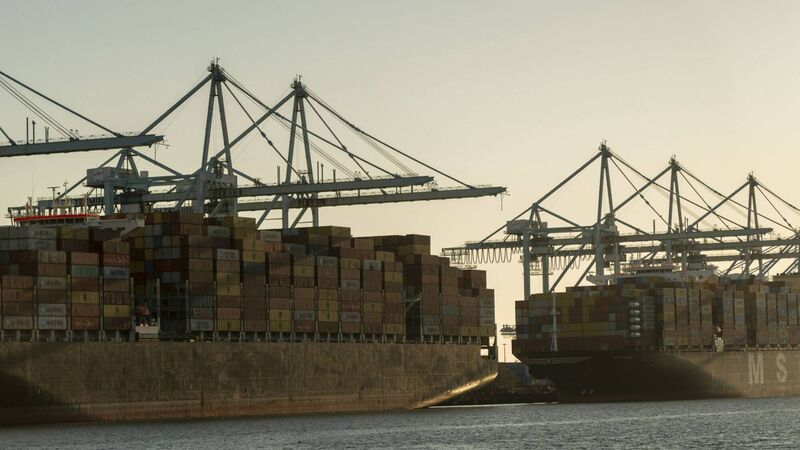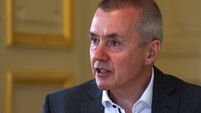Oliver Mangan: With rising inflation central banks face difficult choices

Risks to the global economy include the supply chain crunch with many ports seeing huge backlogs of containers. Picture: Kyle Grillot/Bloomberg
Autumn updates on the outlook for the global economy have been published in recent weeks by the IMF and OECD.
These show little change to their growth forecasts for 2021 and 2022 compared to their mid-year projections, with the world economy expected to expand by close to 6% this year and 4.5%-5% next year.
However, the updates strike a far more cautious tone, acknowledging that the recovery has lost some momentum, while the risks to the outlook are rising.
The IMF notes that Covid-19 health risks still abound, with the ongoing pandemic holding back a return to full economic normalcy.
On the other hand, the release of pent-up demand and a rebound in commodity prices, especially in the energy sector, have caused inflation to surge this year.
Central banks confronting rising inflation against the backdrop of subdued employment levels and increasing downside risks to growth, are facing difficult policy choices.
Given this level of uncertainty, one would think that central banks would proceed cautiously, particularly until there is more clarity in regard to underlying inflation pressures and price dynamics.
Such clarity is unlikely to emerge before spring.
The risk of significant policy errors is rising in this regard, as central banks start to diverge in their views on inflation.
The ECB is still strongly of the view that the sharp rise in inflation will prove transitory. Thus, it is winding down its asset purchases at a very slow pace, while sending signals that any rate rises are a long way down the road.
The US Federal Reserve is set to begin tapering its QE asset purchase programme next month, with a view to ending it completely around the middle of next year.
By contrast, the Bank of England has become a lot more perturbed about inflation since its last policy meeting a month ago, when its’ policy committee voted by seven-to-two to continue with its bond-buying programme until the end of the year.
Now it is signalling that rates will have to start rising soon, possibly as early as November.
This has sent UK interest rate markets into a frenzy. Futures contracts are discounting that rates could be hiked from 0.1% at present to 1% by next summer, with a further 25bps rise possible later in 2022.
Such tightening risks killing off the economic recovery, with fiscal tightening also on the cards.
As a result, no further UK rate hikes are envisaged by markets post-2022, long-dated gilt yields have moved lower recently, while sterling remains range-bound.
In our view, while early UK rate hikes now look likely, the markets would seem to have priced in too much tightening for next year.
- Oliver Mangan is Chief Economist with AIB










